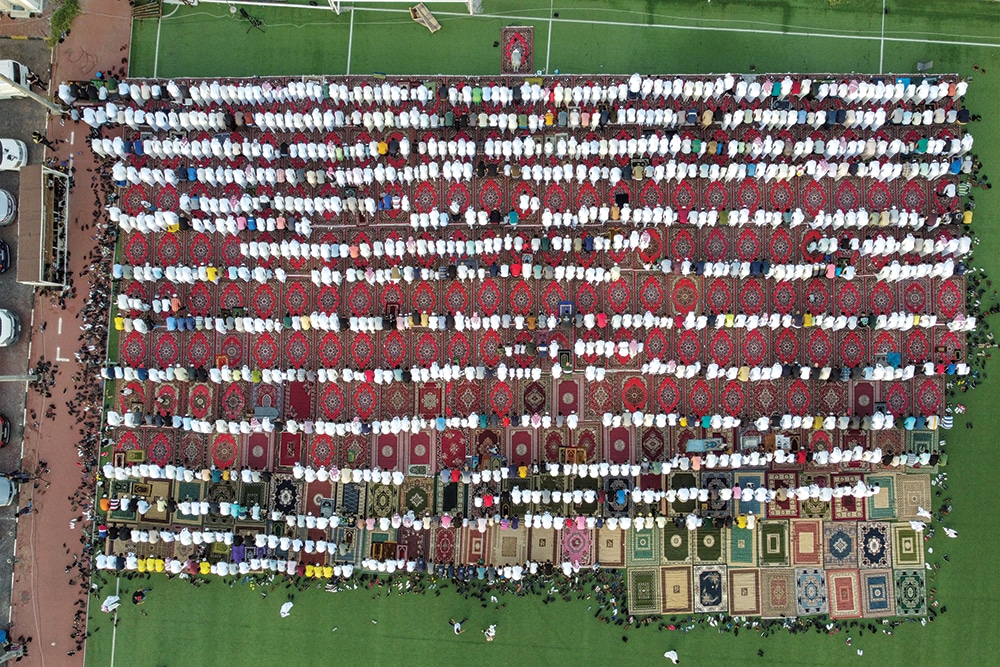By Faten Omar
KUWAIT: Arabs celebrate Eid in many different ways, depending on the country and culture. However, different traditions and practices can be observed in the same country, especially among Kuwaiti citizens themselves. Citizens told Kuwait Times about bedouin and urban people and how they spent Eid, sharing the background of their traditions, cultures and diversity.
 Salem Al-Kandari
Salem Al-KandariSalem Al-Kandari said the Eid prayer is a special beginning for his family as urbanites. “On the first day of Eid, women, men, girls, boys, and children attend a special Eid prayer in mosques or outdoor prayer areas,” he said. After the Eid prayer, Kandari said the day will start by greeting each other and getting blessings from elder family members. From noon, visits start by greeting neighbors and friends, followed by a gathering in the house of the eldest family member to have lunch and begin the activities of the feast.
Talal Abdullah Al-Fadhli, who comes from a mixed family of bedouins and urbanites, told Kuwait Times that Eid customs in Kuwait differ between the people of the desert and the people of the city. Some customs are completely convergent, such as the traditional dishdasha, while others differ, especially concerning visits. “City people start visits directly after Eid breakfast early in the morning. The Eid breakfast usually includes some light food, along with Kuwaiti food like darabeel, milk, dates, debs and rahash, which are the main dishes on the breakfast table,” he noted.
For bedouins, Fadhli pointed out the Eid breakfast is completely different, as they focus on sacrificing livestock. Between 9 to 11 am, the feast is served to guests. “The bedu start Eid day at diwaniyas rather than visiting family and relatives. They gather with relatives late in the evening at the family dinner table,” he said, adding that in the morning period, they visit senior officials, managers and tribal sheikhs, unlike city people.
 Talal Abdullah Al-Fadhli
Talal Abdullah Al-Fadhli“On the second and third days of Eid, the sons of the tribes take their children to entertainment places inside Kuwait, while urbanites prefer to spend Eid abroad, at chalets, farms or stables in Kabd. Regarding traditional clothes, both of them care about traditional clothing, even for children, although city people do not force children under five to wear traditional clothing,” he noted. Fadhli said customs have changed over time and generations. “There are political visits, where some people focus on visiting important people who are of importance — so-called ‘electoral keys’ —and who will serve their electoral interests in the future. They hold an official reception on the second day of Eid,” he said.
As for eidiya (money given to children on Eid), he indicated that it differs from what it was in the past. In the past, eidiya was a quarter or half a dinar, with and the highest eidiya amounting to one dinar. But now the eidiya is not less than KD 20 and can reach KD 100. “There is also the use of technology. Children are now asking to send a payment link instead of cash. As for women, they offer Eid money in envelopes designated especially for Eid, along with a gift,” Fadhli said.
 Jarah Fawaz Al-Enzi
Jarah Fawaz Al-EnziJarah Fawaz Al-Enzi explained that the bedouin Eid atmosphere starts immediately after the Eid prayer, where they open their diwaniyas and prepare coffee and tea to receive guests. “People in the neighborhood know which person will open his diwaniya and offer lunch, so you will see people flocking there, and it becomes a custom. The atmosphere of Eid starts from the diwaniya with exchanging Eid greetings, shaking hands and making conversation. After lunch, everyone goes their way and to fulfill their obligations towards family,” he said.











